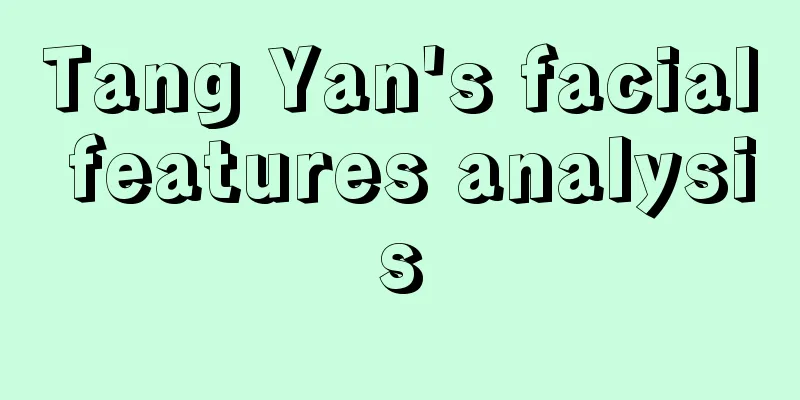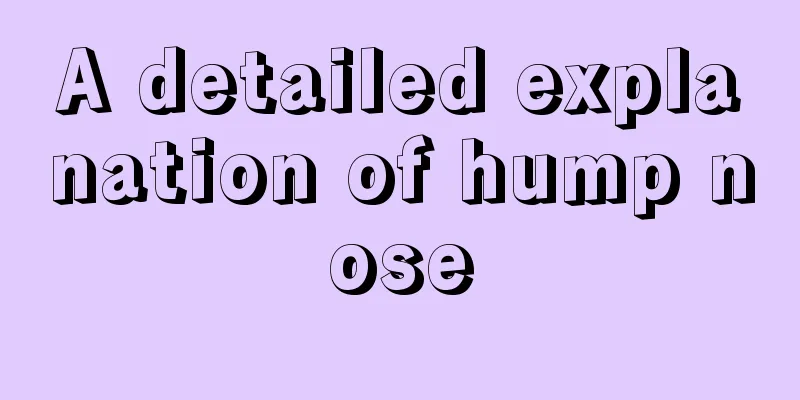Detailed explanation of Tuibei 60: The twelfth image of Tuibei Tu: Yi Hai

|
Tuibei Tu is a work by the Tang Dynasty geomancers Yuan Tiangang and Li Chunfeng. It predicts some historical events that happened in later generations. The book is divided into 60 images. In ancient times, it was banned by emperors because it was too accurate. Today I want to introduce to you the twelfth image of "Tui Bei Tu": Yi Hai. Friends who are interested can learn about it! 【Prophecy】 A stone is called someone else's father The 28 states are no longer Tang territory 【Song said】 The first sign of the opposite is that there are many mouths coming in and out and no one is responsible The father dies and the son dies too. 1. Explain the prophecy 【A piece of stone】: refers to the character "石" (stone) in the name of Shi Jingtang, the famous "child emperor" in Chinese history. [Referring to someone else as his father]: Shi Jingtang sought help from the Khitan on the condition of ceding land, paying tribute, and treating the Khitan like a father.[1] The Khitan sent troops to destroy the Later Tang, established Shi Jingtang as emperor, and established the Later Jin. Shi Jingtang called Yelu Deguang, the Khitan king who was 10 years younger than him, his father and called himself "the child emperor". He ceded 16 states to him and provided 300,000 tons of cloth every year. [Unifying the 28 states is no longer Tang territory] "Twenty-eight": sixteen. The Later Jin Dynasty ceded the Sixteen Prefectures of Yanyun to the Khitan, and it was no longer part of the territory of the Later Tang Dynasty. 2. Explanation of the Song [Anti-signs first come from talking too much] (Chen Xi's interpretation) "Fan Zhao": It is the word "father". The upper part of the character “兆” has “><”, and the upper part of the character “父” is “<>”; the lower parts are similar, and the upper parts are opposite, so “反兆” is the character “父”. "The opposite omen is preceded by more": "father" plus "duo" is the word "dad". So the meaning of this sentence is: Shi Jingtang called the Khitan King "Daddy" all the time! This riddle is the most biting irony in "The Book of Changes". [No one is in charge of coming in and going out]: The Later Jin Dynasty was at the mercy of the Khitan and had no control over major matters. [The one who tied the bell must untie it; the father dies and the son also dies]: This is borrowed from the idiom "The one who tied the bell must untie it", which means that the Later Jin Dynasty was established by the Khitan and also perished at the hands of the Khitan. The Later Jin Dynasty was founded on January 11, 937 in Khitan. After Shi Jingtang died in 942, his adopted son (nephew) Shi Chonggui ascended the throne. He called himself the grandson of the Khitan rather than a subject, which led to the Khitan's southward migration. On January 11, 947, the country was destroyed.
In 936, Shi Jingtang (a Shatuo), the governor of Hedong in the Later Tang Dynasty, obtained the assistance of the Liao army on the condition of ceding the Sixteen Prefectures of Youyun (now the northern part of Hebei, Shanxi and part of Inner Mongolia), paying an annual tribute of 300,000 pieces of silk and recognizing the Liao monarch Yelu Deguang as his father. He overthrew the Later Tang Dynasty, established a regime, named Jin, and moved the capital to Kaifeng, which is known in history as the "Later Jin Dynasty". After the establishment of the Later Jin Dynasty, the Liao army used the Sixteen Prefectures of Youyun as a base to attack the Central Plains from the south. They marched south many times, causing serious damage to the social economy of the northern region. In early 947, the Liao army invaded Kaifeng and destroyed the Later Jin Dynasty. The Later Jin Dynasty existed for a total of twelve years. |
<<: Analysis of the face of a man who is destined to be rich
>>: Zhuge's Divination 23 - Middle and Lower Lot Tongren 94
Recommend
Which parts of the body are prone to losing money due to moles
From the perspective of physiognomy, most moles o...
What is the fate of those born in 1970?
Good or bad fortune will affect a person's li...
People who always want to control their children within their own vision
Parents always want to control everything about t...
Alibaba Cloud Disk 100G Free Cloud Disk Large Capacity Storage Backup Sharing Unlimited Speed
As a cloud storage service product under Alibaba ...
Is there any basis for the fate of a woman with a mole on her eyebrow?
For an individual, destiny is indeed closely rela...
How to check your fortune in palmistry
As the saying goes, people die for money and bird...
Bank of Canada Deputy Governor Talks About Monetary Policy Innovation, Mentions Bitcoin
According to the Vancouver Sun, the Bank of Canad...
The United States’ path to stablecoins
Let’s skip over “Crypto Mom” Hester Peirce. The c...
What does a mole on the right side of a woman's neck mean?
In fact, the most common thing for a person is th...
What does it look like to have money disputes?
Financial disputes in life are never a good thing...
Are women with thick, dark and smooth eyebrows particularly generous?
To see whether a woman is energetic and spirited,...
Success line to see career, what kind of palmistry is easy to succeed
Success line to see career, what kind of palmistr...
Are men with square faces good at manual work?
In life, everyone is good at different areas. Som...
Men with moles on the back of their ears: Do men with moles on the back of their ears have a rich material life?
Although many people say that people should not b...
Finding Satoshi Nakamoto: From Peter Thiel to Elon Musk
Two years ago, billionaire entrepreneur Peter Thi...









